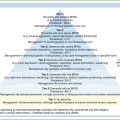Chapter 31 ELECTROCONVULSIVE THERAPY AND OTHER PHYSICAL TREATMENTS
INTRODUCTION
This chapter covers the use of electroconvulsive therapy (ECT) and other physical treatments for older people with mental health problems. While most ECT is undertaken on an inpatient basis, older persons’ community mental health teams will see people who ultimately need admission to hospital for ECT and may be managing people having outpatient maintenance ECT. Other physical treatments including bright light and physical exercise are most commonly prescribed to outpatients. The chapter finishes with brief mention of some experimental treatments.
ELECTROCONVULSIVE THERAPY
The scalp electrodes used in ECT are small metal discs. For bilateral ECT, the electrodes are placed bitemporally, whereas for unilateral ECT the electrodes are placed over the non-dominant temporal region (usually the right side) and near the vertex of the head. Electrolytic gel is usually applied to the electrodes to improve conduction. Bilateral ECT works a little faster than unilateral ECT, but causes more confusion and amnesia. Right unilateral ECT is usually preferred in older people as it is better tolerated. However, bilateral ECT is still sometimes used in older people, particularly when unilateral ECT has not been effective or when a rapid response is essential.
ECT is indicated principally for severe, treatment-resistant depression. It is often used when people are suicidal or psychotic, or when they are not eating and drinking satisfactorily. ECT is less often used in people with mania, schizoaffective disorder and schizophrenia. The efficacy of ECT in depression has been established through the use of randomised controlled trials (RCTs) comparing real ECT to ‘sham’ ECT. In sham ECT the procedure is exactly the same as for real ECT, but no current is delivered and no seizure induced. The available evidence suggests that ECT works well in older people. Some evidence even suggests that ECT works better in older people than in younger people. Lisanby (2007) gives a clear description of the use of ECT in older people.
Medical work-up for electroconvulsive therapy
It is important to establish that it is medically safe to administer ECT to the older person. The medical work-up includes a detailed physical examination, screening blood tests and an electrocardiogram (ECG). In some people, respiratory function tests and a chest X-ray are indicated. Although the yield is low, it is common for psychiatrists to order a neuroimaging study (computed tomography (CT) or magnetic resonance imaging (MRI) brain scan) prior to ECT to check for rare causes of raised intracranial pressure. Common relative contraindications to ECT include uncontrolled hypertension and hyperkalaemia (often secondary to chronic renal impairment).
Stay updated, free articles. Join our Telegram channel

Full access? Get Clinical Tree




